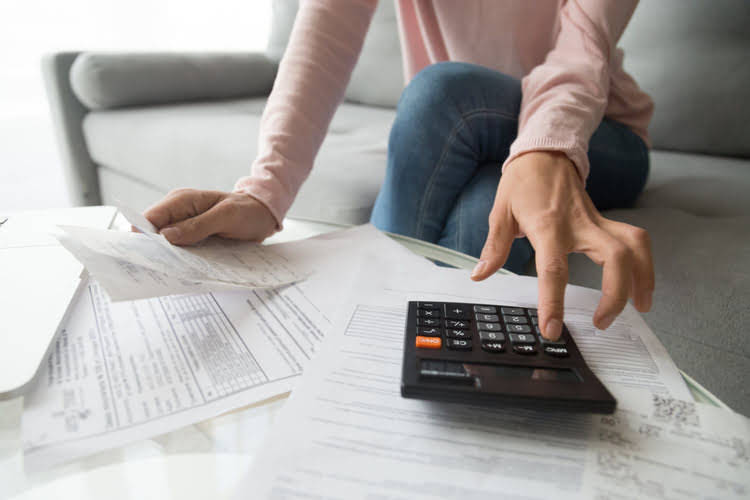
Because most accounting textbooks use double declining balance as a depreciation method, we’ll use that for our sample asset. The declining balance method is an accelerated depreciation system of recording larger depreciation expenses during the earlier years of an asset’s useful life. The system records smaller depreciation expenses during the asset’s later years. This method falls under the category of accelerated depreciation methods, which means that it front-loads the depreciation expenses, allowing for a larger deduction in the earlier years of an asset’s life.
Adjustments and Exceptions in DDB Calculation
Under the DDB method, we don’t consider the salvage value in computing annual depreciation charges. Instead, we simply keep deducting depreciation until we reach the salvage value. This is the fixture’s cost of $100,000 minus its accumulated depreciation of $36,000 ($20,000 + $16,000).

Double Declining Depreciation Rate Calculation
Since we already have an ending book value, let’s squeeze in the 2026 depreciation expense by deducting $1,250 from $1,620. The steps to determine the annual depreciation expense under the double declining method are as follows. Given its nature, the DDB depreciation method is best reserved for assets that depreciate rapidly in the first several years of ownership, such as cars and heavy equipment. By applying the DDB depreciation method, you can depreciate these assets faster, capturing tax benefits more quickly and reducing your tax liability in the first few years after purchasing them. (You can multiply it by 100 to see it as a percentage.) This is also called the straight line depreciation rate—the percentage of an asset you depreciate each year if you use the straight line method. The most basic type of depreciation is the straight line depreciation method.
Salvage Value and Book Value: How Double Declining Balance Depreciation Method Works
In this lesson, I explain what this method is, how you can calculate the rate of double-declining depreciation, and the easiest way to calculate the depreciation expense. Our AI-powered Anomaly Management Software helps accounting professionals identify and rectify potential ‘Errors and Omissions’ on a daily basis so that precious resources are not wasted during month close. It automates the feedback loop for improved anomaly detection and reduction of false positives over time. We empower accounting teams to work more efficiently, accurately, and collaboratively, enabling them to add greater value to their organizations’ accounting processes. Our Financial Close Software is designed to create detailed month-end close plans with specific close tasks that can be assigned to various accounting professionals, reducing the month-end close time by 30%. The workspace is connected and allows users to assign and track tasks for each close task category for input, review, and approval with the stakeholders.
DDB is an Accelerated Method of Depreciation
- Accelerated depreciation is any method of depreciation used for accounting or income tax purposes that allows greater depreciation expenses in the early years of the life of an asset.
- With our straight-line depreciation rate calculated, our next step is to simply multiply that straight-line depreciation rate by 2x to determine the double declining depreciation rate.
- While this may be true for some companies, board sizes can vary significantly depending on the size and nature of the organization.
- Companies usually opt for this method when they expect the asset to provide higher productivity in the initial years.
- DDB is preferable for assets that lose their value quickly, while the straight-line method is more suited for assets with a steady rate of depreciation.
This method helps businesses recognize higher expenses in the early years, which can be particularly useful for assets that rapidly lose value. The double declining balance method is considered accelerated because it recognizes higher depreciation expense in the early years of an asset’s life. By applying double the straight-line depreciation rate to the asset’s book value each year, DDB reduces taxable income initially.
Even if the double declining method could be more appropriate for a company, i.e. its fixed assets drop off in value drastically over time, the straight-line depreciation method is far more prevalent in practice. The DDB depreciation method offers businesses a strategic approach to accelerate depreciation. When it comes to taxes, this approach can help your business reduce its tax liability during the crucial early years of asset ownership. With declining balance methods of depreciation, when the asset has a salvage value, the ending Net Book Value should be the salvage value. Under Straight Line Depreciation, we first subtracted the salvage value before figuring depreciation.
What is the DDB depreciation method?

Set your business up for success with our free small business tax calculator. Implement our API within your platform to provide your clients with accounting services. Save more by mixing and matching the double declining balance method bookkeeping, tax, and consultation services you need. Some examples of the case are mobile phones, computer equipment, and other devices which utilize technology that rapidly and regularly changes.
- It is advisable to consult with a professional accountant to ensure that depreciation is accurately recorded in compliance with accounting standards and regulations.
- Starting off, your book value will be the cost of the asset—what you paid for the asset.
- In most depreciation methods, an asset’s estimated useful life is expressed in years.
- Unlike straight-line depreciation, which dictates that an asset will experience the same amount of depreciation over the course of its lifetime, DDB depreciation will cause the asset to depreciate twice as quickly.
- Using the DDB method allows the company to write off a larger portion of the car’s cost in the first few years.
- If something unforeseen happens down the line—a slow year, a sudden increase in expenses—you may wish you’d stuck to good old straight line depreciation.
Each method has its advantages, suited to different types of assets and financial strategies. In the world of finance and accounting, understanding how to manage and account for asset depreciation is crucial for all businesses. Imagine being able to maximize your tax deductions and improve your cash flow in the initial years of an asset’s life. The double declining balance method accelerates depreciation charges instead of allocating it evenly throughout the asset’s useful life. Proponents of this method argue that fixed assets have optimum functionality when they are brand new and a higher depreciation charge makes sense to match the fixed assets’ efficiency. The declining balance depreciation method is used to calculate the annual depreciation expense of a fixed asset.

We help eCommerce businesses master their finances.
While some accounting software applications have fixed asset and depreciation management capability, you’ll likely have to manually record a depreciation journal entry into your software application. With a good look at the concept, let’s set eyes on the benefits of the double declining balance method. For example, if an asset has a salvage value of $8000 and is valued in the books at $10,000 at the start of its last accounting year. In the final year, the asset will be further depreciated by $2000, ignoring the rate of depreciation.
